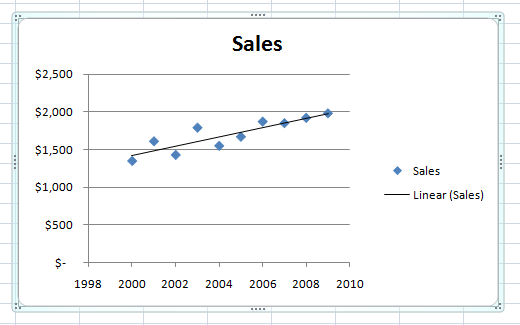Evaluation of Simple Regression Output For Excel 2010 and Excel 2013. All Calculations Performed By the Simple Regression Data Analysis Tool in Excel 2010 and Excel 2013. Prediction Interval of Simple Regression in Excel 2010 and Excel 2013 Excel Regression Step 6 – Evaluate the Residuals. Trying to do a regression analysis on a Mac for a file with close to a hundred-thousand cells. The standard data analysis tool pack won't run a Regression on two columns because it's too much data.
- Excel Regression Analysis Output Explained
- Excel Data Analysis Regression Tool
- Regression Analysis In Excel For Mac
- Regression Analysis Tools In Excel
- Excel Regression Analysis Interpretation
We tried to find some great references about Examples Of Data Analysis In Excel 2010 And Data Analysis Excel Mac for you. Here it is. It was coming from reputable online resource which we enjoy it.
We hope you can find what you need here. We constantly effort to show a picture with high resolution or with perfect images. Examples Of Data Analysis In Excel 2010 And Data Analysis Excel Mac can be valuable inspiration for those who seek an image according specific categories, you will find it in this website. Finally all pictures we've been displayed in this website will inspire you all. Thank you for visiting.
Download by size:HandphoneTabletDesktop (Original Size)
Back To Excel Data Analysis Examples
9 photos of the 'Excel Data Analysis Examples'
Excel Data Analysis Sort Filter Pivottable Formulas And Sample Data For Excel Practice

Excel Data Analysis Sample And Data Analysis Examples In Excel
Excel Regression Analysis Output Explained
Excel Data Analysis Toolpak Examples And Excel Data Analysis Tutorial
Data Analysis In Excel 2007 Examples And Data Analysis Using Excel Pdf
Excel Statistical Data Analysis Example And Excel Data Analysis Course
Data Analysis In Excel With Examples And Excel Data Analysis Toolpak
Excel Data Analysis Examples And Excel Data Analysis Examples Pdf
Excel 2010 Data Analysis Sample Files And Data Analysis In Excel 2013
Examples Of Excel Data Analysis And Excel Data Analysis Regression

There is a lot more to the Excel Regression output than just the regression equation. If you know how to quickly read the output of a Regression done in, you’ll know right away the most important points of a regression: if the overall regression was a good, whether this output could have occurred by chance, whether or not all of the independent input variables were good predictors, and whether residuals show a pattern (which means there’s a problem).
Excel Regression Output With Color-Coding Added
This video will illustrate exactly how to quickly and easily understand the output of Regression performed in Excel:
Step-By-Step Video About How To Quickly Read and Understand the Output of Excel Regression
(Is Your Sound and Internet Connection Turned On?)
Amazon Kindle Users Click here to View Video
The 4 Most Important Parts of Regression Output
1) Overall Regression Equation’s Accuracy
(R Square and Adjusted R Square)
2) Probability That This Output Was Not By Chance
(ANOVA – Significance of F)
3) Individual Regression Coefficient and Y-Intercept Accuracy
Excel Data Analysis Regression Tool
4) Visual Analysis of Residuals
Some parts of the Excel Regression output are much more important than others. The goal here is for you to be able to glance at the Excel Regression output and immediately understand it, so we will focus our attention only on the four most important parts of the Excel regression output.
Regression Analysis In Excel For Mac
1) Overall Regression’s Accuracy
R Square
This is the most important number of the output. R Square tells how well the regression line approximates the real data. This number tells you how much of the output variable’s variance is explained by the input variables’ variance. Ideally we would like to see this at least 0.6 (60%) or 0.7 (70%).
Adjusted R Square
This is quoted most often when explaining the accuracy of the regression equation. Adjusted R Square is more conservative the R Square because it is always less than R Square. Another reason that Adjusted R Square is quoted more often is that when new input variables are added to the Regression analysis, Adjusted R Square increases only when the new input variable makes the Regression equation more accurate (improves the Regression equation’s ability to predict the output). R Square always goes up when a new variable is added, whether or not the new input variable improves the Regression equation’s accuracy.
2) Probability That This Output Was Not By Chance
Significance of F

This indicates the probability that the Regression output could have been obtained by chance. A small Significance of F confirms the validity of the Regression output. For example, if Significance of F = 0.030, there is only a 3% chance that the Regression output was merely a chance occurrence.
3) Individual Regression Coefficient Accuracy
Regression Analysis Tools In Excel
P-value of each coefficient and the Y-intercept
The P-Values of each of these provide the likelihood that they are real results and did not occur by chance. The lower the P-Value, the higher the likelihood that that coefficient or Y-Intercept is valid. For example, a P-Value of 0.016 for a regression coefficient indicates that there is only a 1.6% chance that the result occurred only as a result of chance.
4) Visual Analysis of Residuals
Charting the Residuals
The Residual Chart

Excel Regression Analysis Interpretation
The residuals are the difference between the Regression’s predicted value and the actual value of the output variable. You can quickly plot the Residuals on a scatterplot chart. Look for patterns in the scatterplot. The more random (without patterns) and centered around zero the residuals appear to be, the more likely it is that the Regression equation is valid.
There are many other pieces of information in the Excel regression output but the above four items will give a quick read on the validity of your Regression.